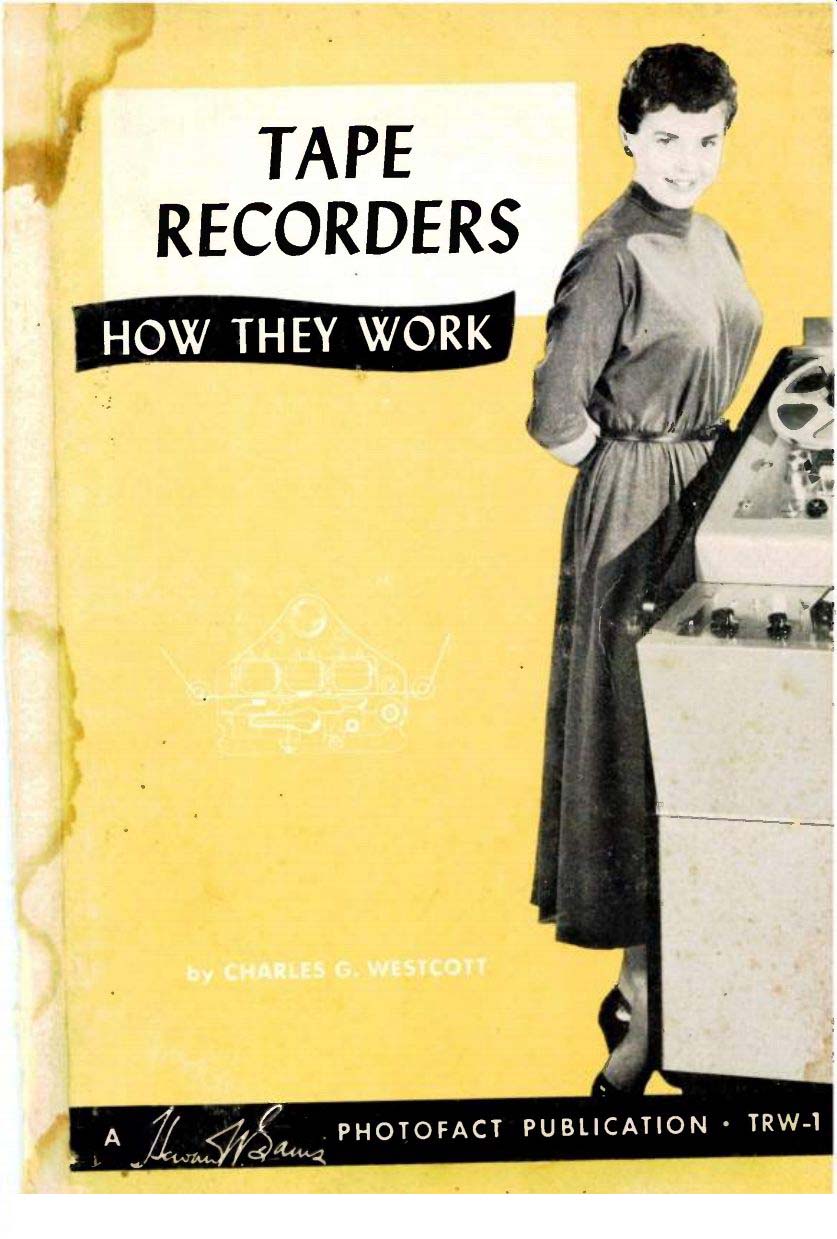
CONTENTS:
1. A Bird's Eye Perspective of the Magnetic Recording Industry
2. Theory of Magnetic Recording
3. The Motorboard-Tape Transport Mechanism
4. Drive Motors for Tape Recorders
8. The Record and Playback Amplifier
11. Test Procedures
------
PREFACE:
The miracle of magnetic recording is suddenly upon us [ca. 1956]. Everywhere one sees tape recorders in action: In the home, in schools, offices, recording studios, Hollywood sound stages. Magazines everywhere refer to magnetic tape recording as the "new medium". And yet the art is very old, even though it has come into use largely within the last decade. Much has been published about tape recording, from microphone placement to long compilation of recorder uses for the whole family. Paradoxically, however, little has appeared about how the tape recorder operates.
The purpose of this guide is a modest one. We do not propose to suggest new uses for your recorder, nor is this guide devoted to lengthy considerations on recording techniques. In this guide we have endeavored throughout to tell you "what's under the cover". Service technicians will see diagrams and schematics typical of most present-day recorders. Hi-Fi enthusiasts will find, for the first time, information on what makes good frequency response and low noise, what to look for in the way of magnetic heads and motorboards.
Recordists will see what is necessary in order not to "overload" the tape and how to obtain the best bias setting.
This guide is based on the principal that in order to make best use of one's recorder, it is first necessary to understand thoroughly how it operates.
A thorough understanding of its electronic and mechanical operation is important. While it is possible to make recordings on home-type machines that are superior to many so-called professional recordings, knowledge enables one to predict in advance what the results will be from his recording. This guide will, then, serve as a guide towards selecting equipment necessary for specialized recording problems.
The prospective buyer of a tape recorder will be acquainted with the features that make a truly fine recording mechanism. Terminology such as "flutter and wow", "signal-to-noise ratio", and "frequency response" are explained and the components necessary to yield the best in performance are described in detail.
The past several years have seen a tremendous increase in the number of tape recorders selling between $100 and $250 (which often rival the professional recorders of a few years ago). But as is so often true one generally gets what he pays for". This guide will simplify the complex task of selecting one's first recorder by showing important differences between recorders in both the low-and high-priced brackets.
If you buy, sell, service, or operate magnetic tape recorders we hope that this guide will prove an invaluable store of information on "Tape Recorders -- How They Work".
by Charles G. Westcott
-------
Also see: